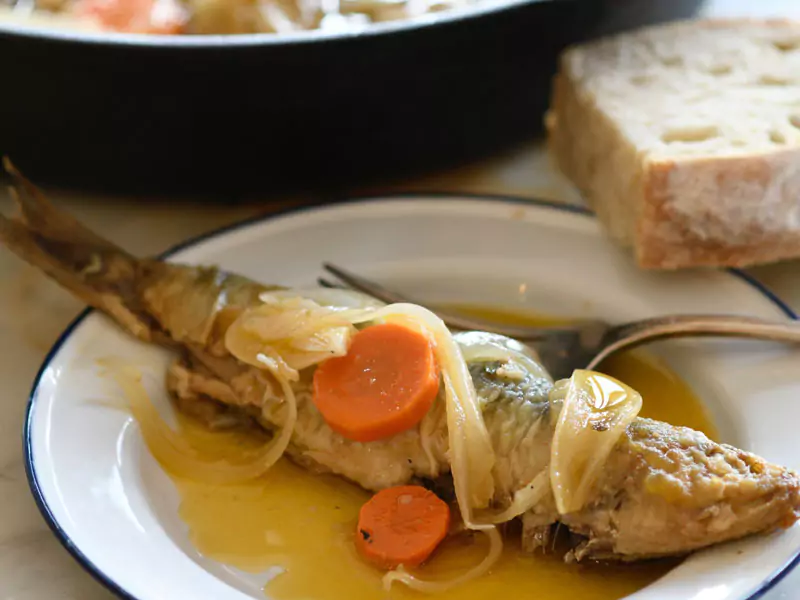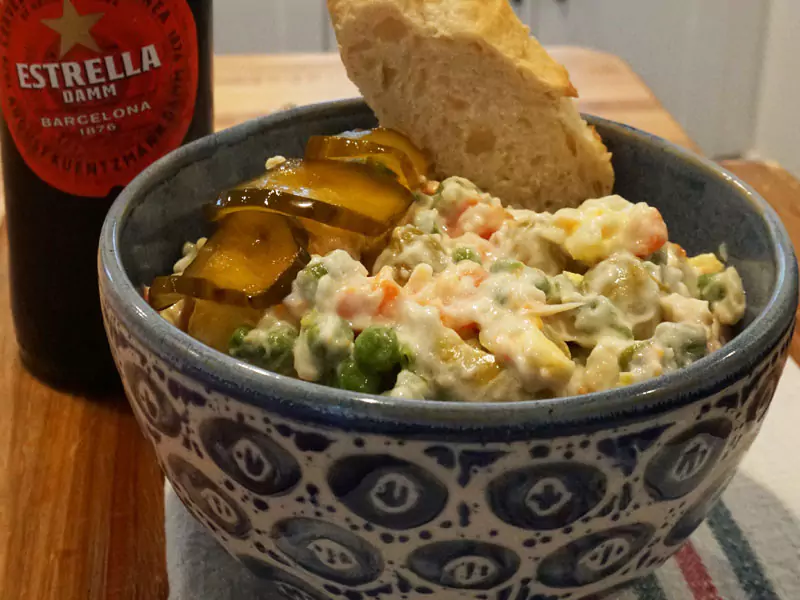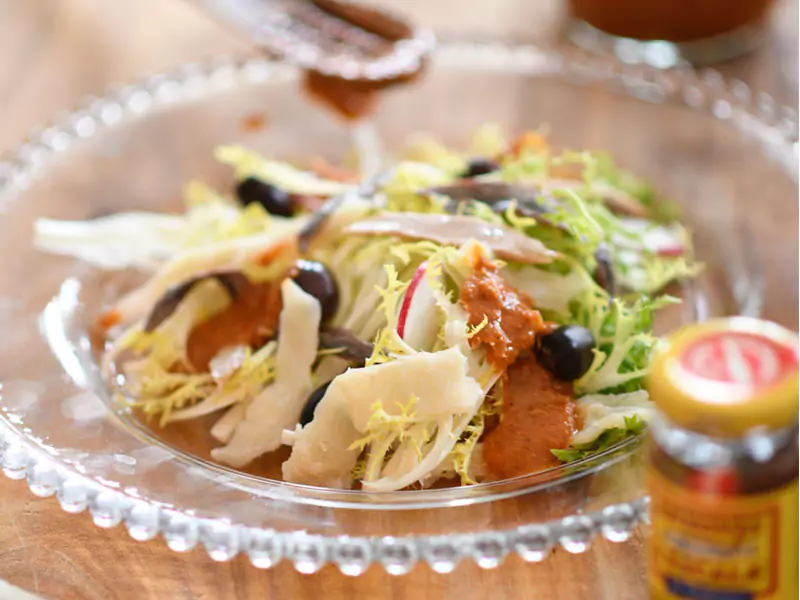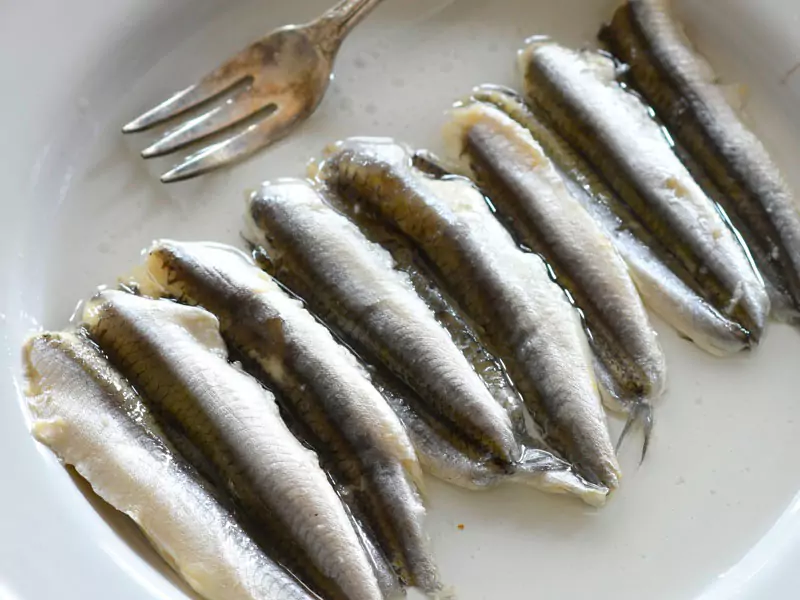Sardines en escabetx
ESCABETX
Escabetx is a preservation method that, alongside salt curing, is essential to preserving food without refrigeration: pickling, or escabetx. Not only was this method necessary for supplying fish to inland Catalonia, it was also used to keep meat and vegetables, and so contributed to the emergence of a wide variety of dishes that still define culinary cultures around the world.
ORIGIN
Pickling is an ancient practice. We know that the Catalan word for general pickling liquid (escabetx) is of Persian origin, and that the Romans left written records of similar conservation methods. Ultimately, though, it is within medieval treatises on Catalan cuisine that pioneering methods of European pickling are to be found. After consulting two essential medieval cookbooks, the Llibre de Sent Soví and the Llibre del coc, I realized that their recipes for liquid use various types of fish, not just the usual oily fish. Pickling liquid has endured for centuries with a certain vigor, even serving as a form of everyday cooking in the region’s many convents during the Baroque period, as evidenced by the myriad of cookbooks penned by the clergy of the time. The method that made its way to Catalonia would later pass through Spain and Portugal, and their slight variations still bear a great deal of similarity to the Catalan version.
HOW IS IT MADE?
The basic ingredients for pickling liquid are vinegar, oil, aromatic herbs (thyme, rosemary, etc.), and the ingredient that you wish to pickle, be it fish, meat, or vegetables. When pickling liquid is used to prepare a vinegar-based sauce, onions and garlic are typically added. Oily fish is ideal for these kinds of recipes. While there are many variations on pickling liquid, I’ll offer a basic, easy-to-remember formula for the perfect pickling base: two parts oil to one part vinegar. After that, you may wish to add white wine, aromatic herbs, and spices like paprika.



